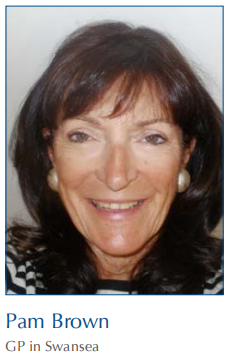Albuminuria is an early indicator of chronic kidney disease (CKD) and we now know that an albumin:creatinine ratio (ACR) of >3 mg/mmol identifies not only an increased risk of CKD progression but also significantly increased cardiovascular disease risk and mortality. Since effective therapies are available to reduce these risks, early identification is important. However, many individuals with risk factors for CKD do not currently receive albuminuria testing and, therefore, CKD diagnosis can be delayed, denying them optimised management and risk reduction.
In people with (and without) diabetes, knowing the ACR is necessary to identify blood pressure targets, identify need for an ACE inhibitor or ARB (even if not needed for blood pressure control), and whether to initiate an SGLT2 inhibitor as combination first-line therapy.
In the THOMAS (Towards Home-based Albuminuria Screening) prospective, randomised, open-label study, a sample of more than 15 000 adults aged 45–80 years closely matching the population demographics of the Netherlands was randomly assigned to home-based ACR screening using either a urinary collection device (UCD) sent to a laboratory for analysis, or a urine dipstick and smartphone application. If ACR was elevated (>3 mg/mmol), the test was repeated using the same method, and those with confirmed elevation were referred for “elaborate” screening for CKD and cardiovascular risk factors, including a further ACR, at a local hospital. If new or uncontrolled risk factors were identified, people were referred to their GP for management.
Primary outcomes were participation rates and yields of the two home-based screening methods and the in-depth hospital screening.
Results
Nearly 60% of those allocated to the UCD screening tool completed their sample, compared to 44% of those asked to complete the dipstick measurement. Overall, 3.3% of those screened with the UCD and 5.1% of those screened with the dipstick and phone app had significant albuminuria confirmed on a second sample and were invited to attend “elaborate” screening for CKD and cardiovascular risk factors. Of those attending the hospital-based screening, albuminuria was confirmed in 91% of participants screened with the UCD but only 37% of those identified by the dipstick and smartphone app, with 66% of those identified by the UCD having an ACR >3 mg/mmol and 25% having an ACR >30 mg/mmol.
Albuminuria was newly diagnosed in 62% of those screened with the UCD and referred for hospital screening, hypertension in 35%, hypercholesterolaemia in 24% and decreased renal function in 22%. Of those from this group who attended the elaborate screening, nearly 90% were referred back to primary care for treatment of a new or out-of-range condition requiring management. Of the 111 people screened with the UCD who were referred back to their GP, only around 54% attended primary care for follow-up according to the 93% of GPs and pharmacists who responded. Of those who did, 66% received the proposed treatment. The authors suggest several reasons for this non-attendance at follow-up, including lack of CKD awareness (both amongst patients and their primary care teams), perception of low risk from CKD and the fact that albuminuria is asymptomatic.
The first home-based faecal occult blood screening study in the Netherlands had similar rates of 47–60% participation, but this rose to more than 70% once the actual screening programme was implemented (Netherlands Comprehensive Cancer Organisation, 2022), so the authors conclude that similar increases in response rates could be anticipated if an official albuminuria screening programme using a UCD was implemented.
Implications for our practice
Although this study identified that population screening for albuminuria could be achievable, with comparable uptake to other well-established screening programmes such as bowel screening, it had a low return in the general population compared to high-risk groups and is unlikely to be implemented, according to an accompanying commentary (Lamprea-Montedegre and Estrella, 2023).
However, this paper is important as a reminder for us to strive for eGFR and ACR screening amongst our high-risk groups, as per the recommendations of NICE (2021) NG203. This should include those with diabetes, hypertension, any cardiovascular disease, previous acute kidney injury (at least 3 years of follow-up), and any multisystem disease with potential for renal involvement, such as systemic lupus erythematosus. It should also include those groups in whom we are less likely to screen, such as people with gout or structural renal tract disease (e.g. recurrent renal calculi, benign prostatic hypertrophy), and those with a family history of end-stage renal disease, hereditary kidney disease, or an incidental finding of haematuria or proteinuria. ACR testing can ensure the earliest detection of CKD, even when eGFR remains normal.
Although we found creative ways to achieve ACR testing during the pandemic, rates continued to decline and ACR testing still has the lowest achievement rate of the 8 care processes in those with type 2 diabetes in the National Diabetes Audit. Now is a great time to reverse that trend, allowing us to optimise care for more people.
References
1. Lamprea-Montealegre JA, Estrella MM (2023) Population-wide albuminuria screening: Implications for CKD detection and management. Lancet 16 Aug [Epub ahead of print]. https://doi.org/10.1016/S0140-6736(23)01140-6
2. Netherlands Comprehensive Cancer Organisation (2022) National monitoring of the Colorectal Cancer Screening Programme in the Netherlands 2021. Available at: https://is.gd/aYwXW0
3. NICE (2021) Chronic kidney disease: assessment and management [NG203]. Available at: www.nice.org.uk/guidance/ng203
This article is excerpted from the Diabetes & Primary Care Vol 25 No 5 2023 by Wound World.



